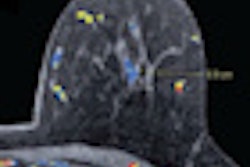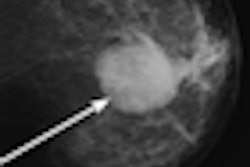Screening mammograms may be able to do more than reveal signs of breast cancer. For women with advanced kidney disease, they can detect calcifications in blood vessels that may be signs of cardiovascular disease, according to a study published January 20 in the Clinical Journal of the American Society of Nephrology.
In the study conducted by a multidisciplinary team of nephrologists, pathologists, and radiologists at the Emory University School of Medicine in Atlanta, mammograms showed calcium deposits in breast arteries in nearly two-thirds of women with end-stage renal disease.
Breast arterial calcification is believed to be a specific marker of medial vascular calcification, the prevalence of which is markedly increased in patients with advanced chronic kidney and end-stage renal disease. Arterial calcium deposits are believed to contribute to the high death rate of patients with advanced kidney failure from heart disease.
The study's principal investigator, W. Charles O'Neill, MD, a professor in the renal division of the department of medicine, and colleagues decided to investigate whether mammography exams could be used to determine the prevalence and risk factors for medial calcification in chronic kidney disease. To do so, they performed histologic examinations of breast tissue, analyzed mammograms of kidney patients with a matched control group, and evaluated extremity x-ray images of patients whose mammograms showed breast arterial calcification.
The researchers first analyzed breast tissue samples of 16 patients with chronic kidney disease who had undergone mastectomies at the hospital between 2007 and 2009. While all of the tissue samples showed medial calcifications of the breast artery, none showed intimal calcifications. Intimal calcifications and medial calcifications are the two types of arterial calcium deposits that may contribute to the high rate of death from heart disease in patients with chronic kidney and end-stage renal disease.
The research team then identified 71 patients with end-stage renal disease who had received mammograms over the past 10 years within the Emory Healthcare system. For each patient, a diabetic control subject of the same age and race who had received a mammogram between 2007 and 2009 was randomly selected.
After screening mammograms were reviewed for the 142 women, breast arterial calcifications were identified in 63% of the patients with renal insufficiency, compared with 17% of patients in the control group.
"We also discovered that breast arterial calcification was present in 36% of mammograms performed five to six years before patients developed end-stage renal disease," O'Neill said. "For patients with stage III chronic kidney disease, this was 16%. We also determined that patients' age and the duration of end-stage renal disease were independent and significant predictors of breast arterial calcification."
A comparison of mammograms and extremity x-rays revealed that breast arterial calcification was present in more than 90% of the patients with peripheral arterial calcification. By comparison, peripheral arterial calcification was identified in fewer than 6% of patients without breast arterial calcification.
Because mammography is routinely performed in women older than 40, the exam could be an extremely important tool in understanding the causes and clinical significance of medial vascular calcification in chronic kidney disease, O'Neill and colleagues suggested.
The authors noted that evaluation of breast arterial calcifications is constrained by the inability to quantify calcification on mammograms but should be possible with the advent of breast CT.
"We are starting to work on this," O'Neill told AuntMinnie.com. "Breast CT scanners are very new modalities -- in their infancy -- and not many medical centers have them. We happen to have one here at Emory, and our goal is to figure out some way to quantify calcification. This could end up being a very powerful tool."
By Cynthia E. Keen
AuntMinnie.com staff writer
January 20, 2011
Related Reading
Women with ESRD have increased incidence of breast calcifications, August 21, 2006
Mammogram findings indicate higher risk of heart disease, December 4, 2002
Breast artery calcification on mammogram a marker for heart disease, December 20, 2000
Copyright © 2011 AuntMinnie.com



















